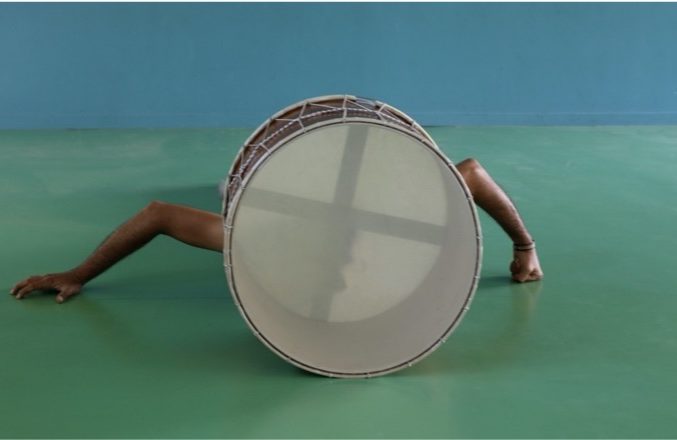
Davul
Hüseyin Umaysız
Description
DAVUL (drum) is one of the oldest instruments since our existence, prehistoric times.
The thymus is an organ that in mammals is found between the sternum and the trachea in the anterior space between the two lungs. The thymus gland is one of the most important organs in the immune system. The thymus ensures the elimination of unwanted auto-reactive clones. In addition, it produces hormones, including thymosin, that stimulates our immune system. The means of communication to train cells. Latest research results tell us that these hormones are also responsible for the feeling of satisfaction and happiness in people. To produce these “happiness hormones”, a simple movement is enough, namely tapping our chest. Like the apes or homo sapiens did or still do, to communicate.
How can we understand our actions, daily life and communication as social beings?
No reference I turned to to address this fundamental question could allay my fear and unease. I found no holistic conclusion to grasp the world. The structures and references created by man throughout history have always been based on the previous system of thought, and have ensured the formation of the next system. Every universal value that is formed and accepted forms a line to the next historical phase.
This thought brought Hüseyin back to the beginning of human existence, the first moment when man begins to define himself and others. He started looking for the first way this happened. What was the first contact between us and life? What did we want first? What structures and references did we form first?
It is obviously not possible to return to the moment when we identified ourselves with our consciousness. But isn’t it possible to try to return to an essence and investigate the references created from there?
This is how he arrived at the basis of all life: the universe as a collection of vibrations.
In DAVUL we will make vibrations in different frequencies visible to an audience and investigate how this changes the consciousness of our humanity. We will do this in different ways, starting from different types of vibrations: the vibration of the drum, voice, body and image. By making vibrations audible and visible, we want to recall and redefine the initial agreements between us as humans and nature. Communication is being reinvented, we are, as it were, discussing with the past.
The davul
To make the universal frequencies visible, audible and tangible and, as it were, to return to the first fundamental realization of existence, the first contact with the world, we choose the davul as a partner for Hüseyin as a performer. The davul is an organic percussion instrument from Turkey, still used in its original form and function; a bass drum consisting of two heads and a wooden construction. During the performance, the davul enters into dialogue with the voice, physical material, images and movements of the human body.
Installation Christoph De Boeck
All this happens in the middle of an interaction with an installation by Christoph De Boeck. Eight iron plates are placed in a crescent around the davul. They are machines that generate movement and sound and vibrate just like the davul. The closer you get to a record, the more the record vibrates and the louder it sounds. In this way, the performer and plates can create a sound performance through movement. The research that I do as a performer with my body and the davul is translated into the plates and space, and thus broadened.
We combine the vibrations of the davul and the spatial installation with various communication methods that humans have developed throughout history: from movement (body dance, halay) to image (physical sculptures with the davul, Chladni patterns, photo and video projection), sound and non-verbal language (dengbejs, morse code).
